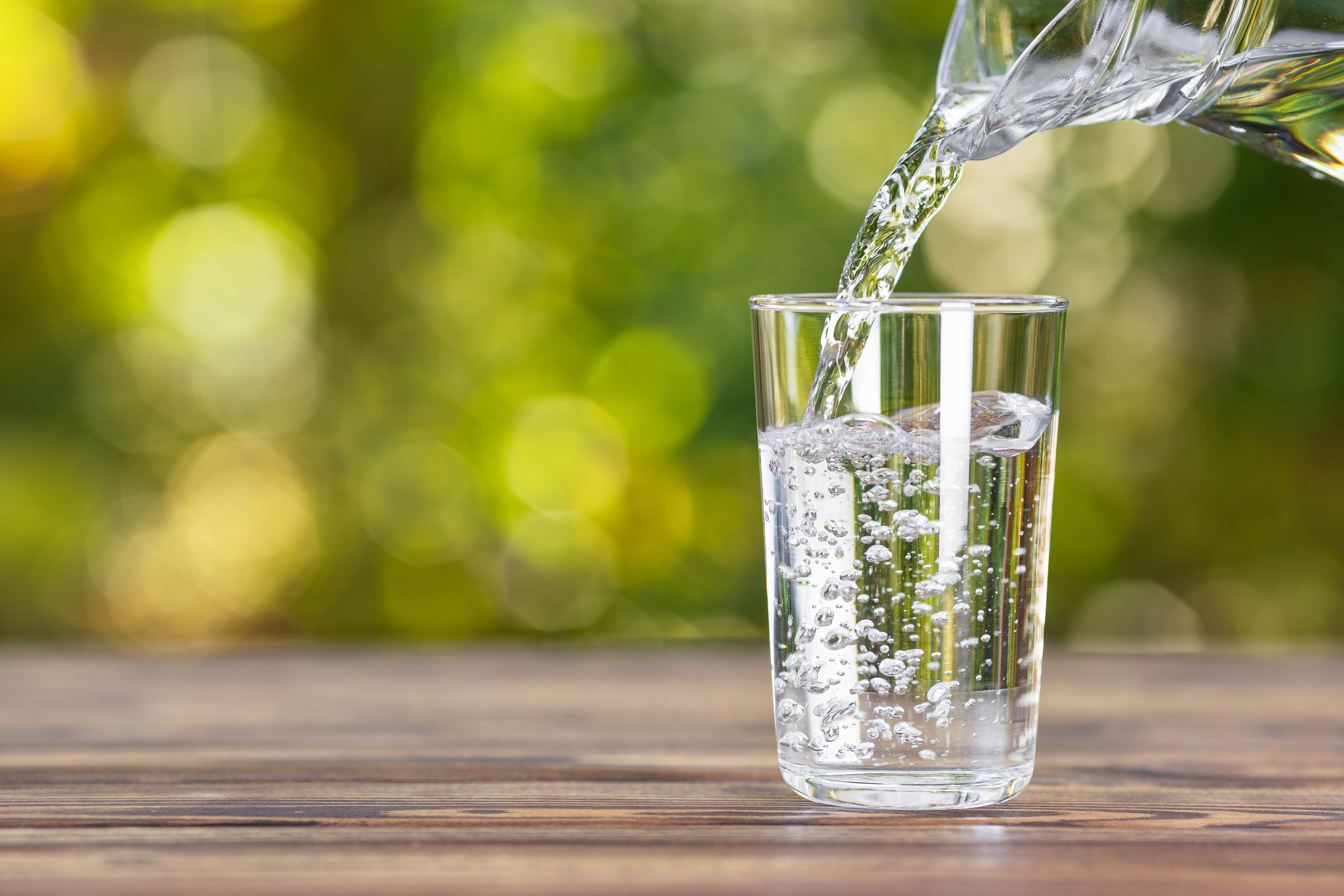Water Sensor Improvements Defined and Reviewed at Analytica
At Analytica 2024, four speakers tackled the issue of water quality and how the detection of what is contained therein continues to evolve.
What is in the water we consume, and how accurately can we measure those components? The instruments that can help more effectively measure water were addressed Wednesday morning at a session titled “Sensors for Water Analysis” at the Analytica 2024 conference in Munich, Germany.
water pouring into glass | Image Credit: © alter_photo - stock.adobe.com

Moderated by Gunther Proll, professor of technology and innovation management and head of the internship office at Reutlingen University, Germany, and Michael Seidel, professor of analytical chemistry and water chemistry at the Technical University of Munich, the symposium featured four half-hour lectures.
The first, “The miniRUEDI is a Portable Mass Spectrometer for Efficient On-Site Quantification of Dissolved Gases in Aquatic Systems,” was presented by Matthias S. Brennwald of the Environmental Isotopes Group and Environmental Tracer Laboratory at the Swiss Federal Institute of Aquatic Science and Technology (Eawag) in Dübendorf, Switzerland (1). As that title suggests, this talk described the development of a mobile mass spectrometer (by Eawag-affiliated Gasometrix GmbH, of which Brennwald is the owner and CEO) for the purposes of on-site quantification of helium (He), argon (Ar), krypton (Kr), nitrogen (N2), oxygen (O2), carbon dioxide (CO2), and methane (CH4), among other elements and gases, in terrestrial waters.
Following that, Wolfgang Vogl, founder and general manager of Vienna Water Monitoring Solutions GmbH, Austria, the company behind the ColiMinder online water quality monitor, gave a talk called “Real Time Measurement of Microbial Water Quality” (2). Vogl’s lecture demonstrated the capabilities of the ColiMinder, which has been on the market since 2016, to measure bacterial contamination or microbiological quality of water in a fully automated manner in a matter of 15 minutes. Vogl said the enzymatic measuring approach of the ColiMinder makes this the only rapid method of its kind that can specifically target and quantify the most important indicator organisms, such as E. coli, enterococci, and the total bacterial count.
The third presentation of the session was delivered by Rudolf J. Schneider, head of environmental analysis for the Federal Institute for Materials Research and Testing (BAM) in Berlin, Germany. In his contribution to the program, “Immunochemical Sensing of Markers in the Water Cycle,” Schneider proposed the base application of an enzyme-linked immunosorbent assay (ELISA) on microtiter plates as the method of choice for analyzing a high number of samples (3), but discussed other approaches as well. ELISA, however, he said, is particularly useful in detecting a diverse range of anthropogenic markers: analgesics (diclofenac), antihistamines (cetirizine), antiepileptic drugs (carbamazepine), hormone-based steroids (estrone), antimicrobials (sulfamethoxazole), caffeine, cocaine, and the primary pollutant bisphenol A (BPA).
Finally, Frank Honold of Xylem Analytics in Wilhelm, Germany delivered his lecture, “Sensors in Environmental Practice.” In this talk, Honold addressed the addition of new technologies such as light-emitting diodes (LEDs) for UV sensing of water bodies—just one of the improvements that is being made to methods, both electrochemical and optical, of water cleaning or trace contaminant removal processes (4). These approaches, he said, can be further optimized for long-term use, which theoretically “opens a big field” for artificial intelligence (AI).
With all four of these talks addressing different advancements and improvements in trace component detection in environmental waters, this session at Analytica 2024 provided not only a thorough background for the topic, but also plenty of information, innovation, and hope for future applications in real-world scenarios.
References
(1) Brennwald, M. S. The miniRUEDI is a Portable Mass Spectrometer for Efficient On-Site Quantification of Dissolved Gases in Aquatic Systems. Presented at Analytica 2024, Munich, Germany, April 10, 2024.
(2) Vogl, W. Real Time Measurement of Microbial Water Quality. Presented at Analytica 2024, Munich, Germany, April 10, 2024.
(3) Schneider, R. J. Immunochemical Sensing of Markers in the Water Cycle. Presented at Analytica 2024, Munich, Germany, April 10, 2024.
(4) Honold, F. Sensors in Environmental Practice. Presented at Analytica 2024, Munich, Germany, April 10, 2024.
New Method Explored for the Detection of CECs in Crops Irrigated with Contaminated Water
April 30th 2025This new study presents a validated QuEChERS–LC-MS/MS method for detecting eight persistent, mobile, and toxic substances in escarole, tomatoes, and tomato leaves irrigated with contaminated water.
University of Tasmania Researchers Explore Haloacetic Acid Determiniation in Water with capLC–MS
April 29th 2025Haloacetic acid detection has become important when analyzing drinking and swimming pool water. University of Tasmania researchers have begun applying capillary liquid chromatography as a means of detecting these substances.
Prioritizing Non-Target Screening in LC–HRMS Environmental Sample Analysis
April 28th 2025When analyzing samples using liquid chromatography–high-resolution mass spectrometry, there are various ways the processes can be improved. Researchers created new methods for prioritizing these strategies.

.png&w=3840&q=75)

.png&w=3840&q=75)



.png&w=3840&q=75)



.png&w=3840&q=75)



